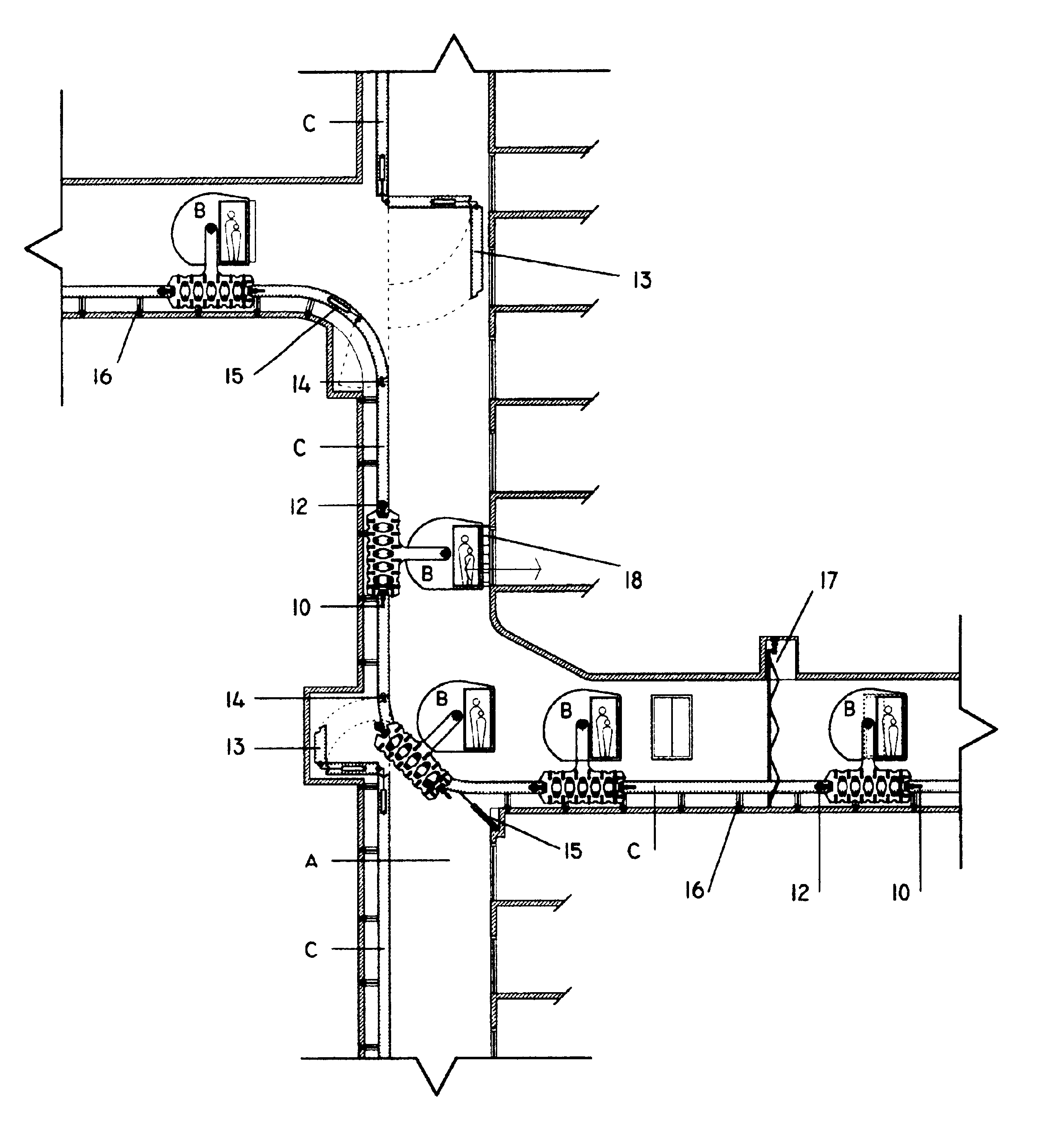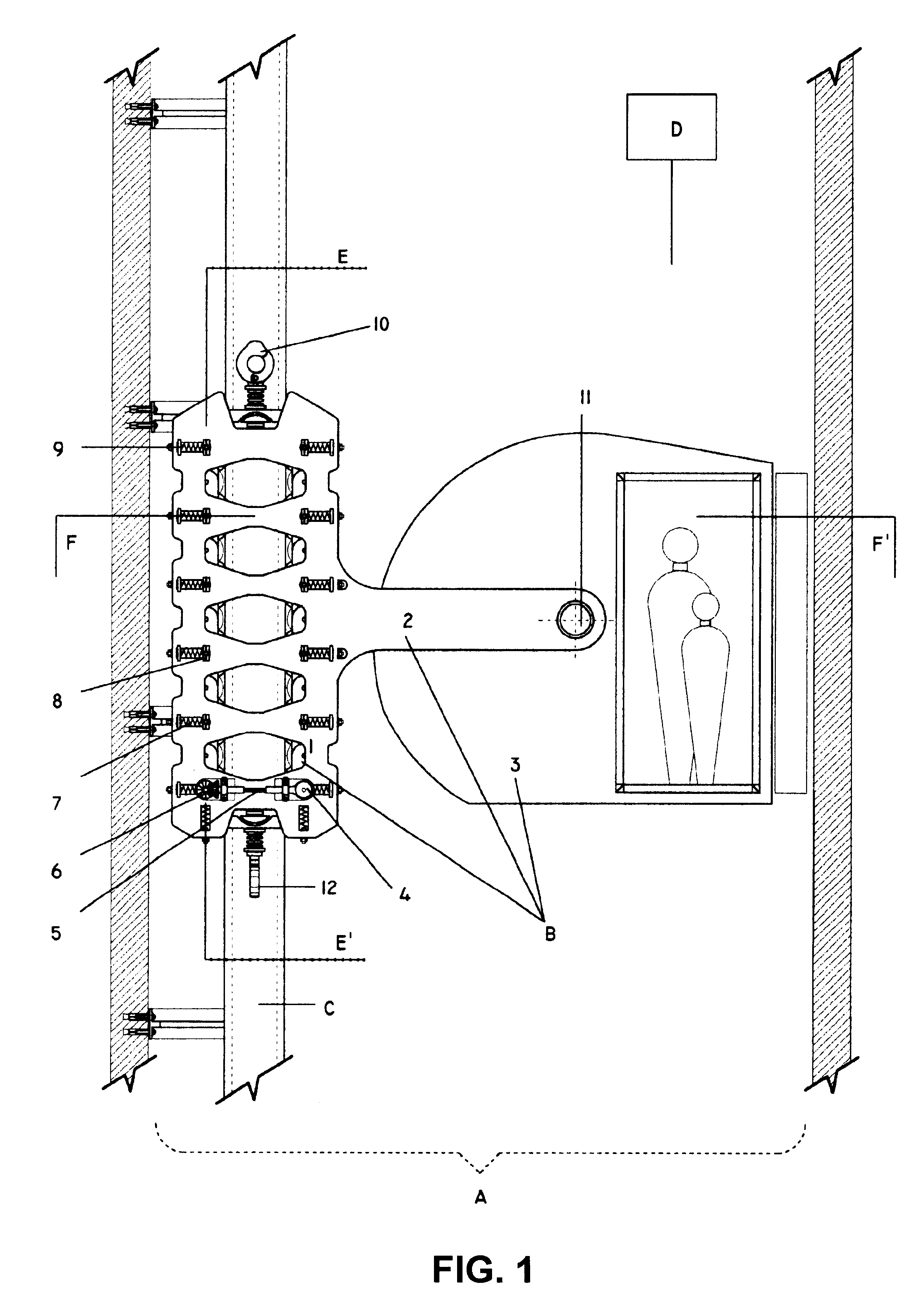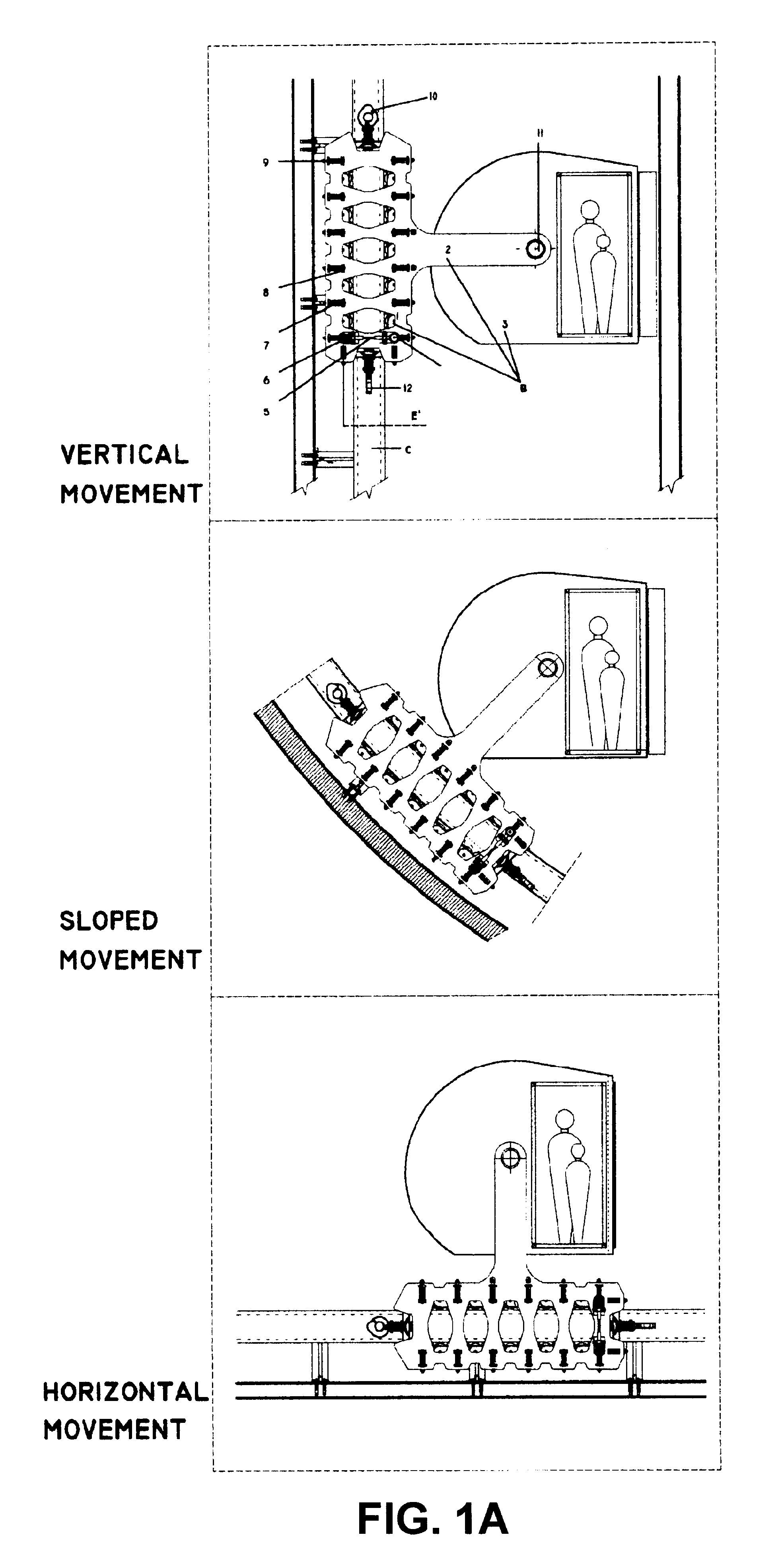Autonomous transport system
a transportation system and autonomous technology, applied in the direction of climate sustainability, railway tracks, locomotives, etc., can solve the problems of not being used as a passenger urban, not being able to run horizontally, and known vertical transportation devices such as elevators using cables and engine rooms,
- Summary
- Abstract
- Description
- Claims
- Application Information
AI Technical Summary
Benefits of technology
Problems solved by technology
Method used
Image
Examples
Embodiment Construction
The Autonomous Transport System (A.T.S) of the present invention is formed by four main sub-systems:
A) Channel Sub-system (CSS)
In FIG. 1, reference A shows the space or channel through which the transport unit may move. This channel can be interior or exterior to a particular premise, depending on its use and location. It will be defined as being interior when located inside of a building, in constructions or urban settlements or in underground sites, and exterior, when the wheel guides and the vehicle are to be located in an open space, outdoors.
B) Vehicle Sub-system (VSS)
In FIG. 1, reference B shows the elements which form the vehicle unit. The unit is powered by electric energy and moves on wheel guides, in any direction: vertical, horizontal or slanted, regardless of the slope; in either direction. The overall runway is controlled from the Central Control Station and the desired stops may be controlled by pre-programmed schedules or else may be selected by the passengers from th...
PUM
 Login to View More
Login to View More Abstract
Description
Claims
Application Information
 Login to View More
Login to View More - R&D
- Intellectual Property
- Life Sciences
- Materials
- Tech Scout
- Unparalleled Data Quality
- Higher Quality Content
- 60% Fewer Hallucinations
Browse by: Latest US Patents, China's latest patents, Technical Efficacy Thesaurus, Application Domain, Technology Topic, Popular Technical Reports.
© 2025 PatSnap. All rights reserved.Legal|Privacy policy|Modern Slavery Act Transparency Statement|Sitemap|About US| Contact US: help@patsnap.com



